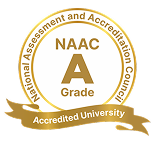

Quick Links
-
International Journal of Agriculture, Allied Sciences and Technology
Scope of Journal
The journal aims to become a comprehensive resource for anyone involved in agriculture and its related fields, including researchers, academics, policymakers, and industry professionals at a Global platform.
The International Journal of Agriculture, Allied Sciences and Technology mainly addresses the thrust area and contemporary issues in the field.
The following are the focused thrust areas
1. Agronomy and Soil Science
Soil science and agronomy examine soil properties and their impact on plant growth. This field provides insights into sustainable soil management practices that enhance agricultural productivity.
2. Water Resource Management and Irrigation
Effective water resource management is crucial for sustaining agricultural productivity in the face of water scarcity. Advanced irrigation techniques ensure the efficient use of water, enhancing crop resilience and yields.
3. Entomology and Plant Pathology
Entomology and plant pathology study pests and diseases that affect crops. Research in this area leads to the development of effective pest management strategies, ensuring healthy and productive crops.
4. Plant Breeding and Genetics
Plant breeding and genetics involve the development of new crop varieties with desirable traits. Advances in this area contribute to increased yields, disease resistance, and adaptation to changing climates.
5. Agricultural Biotechnology
Agricultural biotechnology uses genetic engineering and molecular biology to improve crops and livestock. This field offers innovative solutions for enhancing agricultural productivity and sustainability.
6. Horticulture
Crop science and horticulture study the cultivation and management of crops and plants. Research in this field aims to improve crop yields, pest resistance, and the nutritional quality of produce.
7. Post-Harvest Technology
Post-harvest technology focuses on improving the shelf life and quality of agricultural products. Innovations in this area minimize post-harvest losses, ensuring food security and reducing waste.
8. Agroforestry and Forestry
Agroforestry integrates trees and shrubs into agricultural landscapes to enhance productivity and sustainability. Forestry focuses on the conservation and management of forest resources for ecological and economic benefits.
9. Food Science and Technology
Food science and technology explore the principles and innovations behind food processing, preservation, and safety. This field is essential for developing new products and improving the quality of existing ones.
10. Food Safety
Food safety encompasses practices and regulations to ensure that food is safe for consumption. This area is critical for protecting public health and maintaining consumer trust in food products.
11. Food Security
Food security ensures that all individuals have access to sufficient, safe, and nutritious food. Addressing global food security challenges involves improving food production, distribution, and accessibility.
12. Fisheries and Aquaculture
Fisheries and aquaculture focus on the sustainable management and production of aquatic organisms. This area addresses the growing demand for seafood while conserving marine ecosystems.
13. Animal Sciences and livestock management
Animal science and veterinary medicine focus on the health, welfare, and productivity of livestock. Research in this field supports sustainable animal husbandry practices and ensures food safety.
14. Organic Farming and Agroecology
Organic farming promotes the use of natural inputs and sustainable practices in agriculture. Agroecology emphasizes the ecological interactions within farming systems, enhancing biodiversity and soil health.
15. Sustainable Agriculture and Natural Resource Management
Sustainable agriculture practices focus on balancing food production with the preservation of environmental resources. By implementing efficient resource management, this approach ensures the long-term viability of agricultural systems.
16. Smart Agriculture and Precision Farming
Smart agriculture integrates advanced technologies like IoT, AI, and drones to optimize farming practices. Precision farming enables data-driven decisions that enhance crop yield and reduce resource wastage.
17. Climate Change and Environmental Impact on Agriculture
Climate change poses significant challenges to agricultural productivity, necessitating adaptation and mitigation strategies. This field explores innovative solutions to protect crops and ecosystems from adverse climatic conditions.
18. Renewable Energy in Agriculture
The integration of renewable energy sources in agriculture reduces dependence on fossil fuels. This shift promotes sustainable farming practices by lowering greenhouse gas emissions and operational costs.
19. Agricultural Engineering and Technology
Agricultural engineering and technology develop tools and machinery to improve farming efficiency. This area addresses the challenges of modern agriculture by providing innovative mechanization solutions.
20. Extension and Education and Community Connect
Extension and education programs bridge the gap between research and practical farming. By connecting with communities, these programs disseminate knowledge and foster the adoption of sustainable practices.
21. Agricultural Economics and Entrepreneurship
Agricultural economics analyzes the financial aspects of farming and food production. This field encourages entrepreneurship by exploring new business models and market opportunities in agriculture.
22. Agribusiness Management
Agribusiness management involves the planning and operation of agricultural enterprises. This field focuses on optimizing the supply chain, marketing, and financial management to ensure business success.






